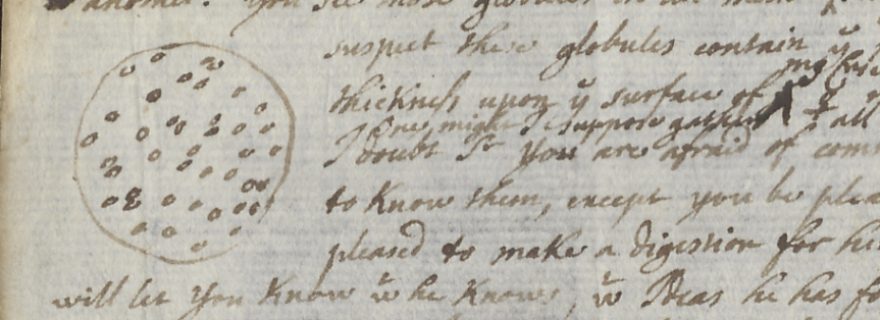Alchemical letters to Isaac Newton
Henri van Swinden's archive in the Leiden Special Collections contains four draft letters by Swiss mathematician Fatio De Duillier to Isaac Newton from 1693. The previously unpublished letters shed light on Newton’s alchemical practices and his reliance on circulation of knowledge.
The Special Collections of Leiden University Libraries hold the entire correspondence of the Dutch mathematician Henri Van Swinden (1746-1823), under shelfmark BPL 755. Van Swinden exchanged letters with several European scholars, naturalists, instrument makers and astronomers, addressing various topics, from meteorology to chemistry, from mathematics and mechanics to astronomy. A significant example of the richness and intellectual depth and complexity of his correspondence is his exchange with the Swiss naturalist George Louis Le Sage (1724-1803). This correspondence lasted for more than twenty years, from 1774 to 1796, and currently consists of eighteen lengthy letters mostly - although not exclusively - covering Le Sage’s obsession: understanding the structure of matter, and the nature of gravity in particular. Le Sage believed he could achieve this goal by studying the Swiss mathematician Fatio De Duillier’s (1664-1753) publications, and his views on Isaac Newton’s method. However, Fatio’s published sources were relatively scarce; it is for this reason that, in 1769, Le Sage decided to buy all of Fatio’s unpublished extant papers, most of which are nowadays conserved in the Bibliothèque de Genève (BGE), in a fond which collects Fatio’s papers and brouillards (drafts): CH BGE Ms. fr. 601-610. But who was Fatio? Fatio was born in Switzerland and had lived both in France, where he had been a disciple of the astronomer Giovanni Domenico Cassini (1625-1712), and England, where, after being elected a Fellow of the Royal Society, he had become an intimate friend of Newton, with whom he shared an interest in the practice of alchemy.
Alchemical letters
On the 28th of October 1780, Le Sage decided to further his conversation on Newton’s method with Van Swinden, by gifting him a few drafts of alchemical letters which Fatio had sent to the English natural philosopher in summer 1693. It is a fact that Van Swinden never returned Fatio’s drafts to Le Sage. Written on both sides of a single folio, these drafts have been preserved in Van Swinden’s corpus of correspondence in the UBL for centuries and can be found in the BPL 755, Lacepede//Luyken sub-folder. They have neither been catalogued separately nor published.
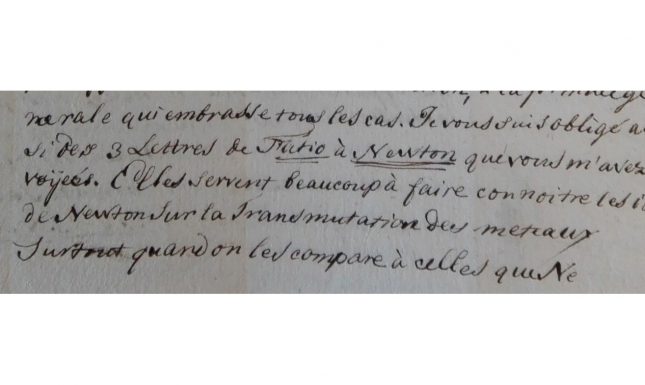

In terms of medium, Fatio used common paper from the period, as the dimension of the paper sheet (356 x 236 mm) and the absence of watermark seems to suggest. On the recto of the sheet, we can clearly see a number “n.533”, which is a reference to a filing system. Although it is hard to establish whether the filing system was conceived by Fatio or rather by Le Sage at a later stage to keep Fatio’s papers organised, a quick examination seems to suggest that Le Sage was the author.
The drafts date June 10th, June 20th, June 24th and August 1st 1693; overall, they are important in that they enrich our understanding of Fatio-Newton’s alchemical correspondence in June 1693, that is considered the year when their collaboration reached its peak. The letters, in fact, revealed previously undisclosed levels of participation in the practice of Newtonian alchemy, involving the French Huguenot community who gravitated around William III’s Court in England. Although this is a point that has been recently made by historian William Newman in his book Newton the Alchemist (Princeton, 2019), three of these letters tell us more about some so-far unknown characters who endeavoured to discover alchemy’s arcana majora along with Fatio and Newton, thus suggesting that the circle of collaborators of the two natural philosophers was even larger than we have so far thought.
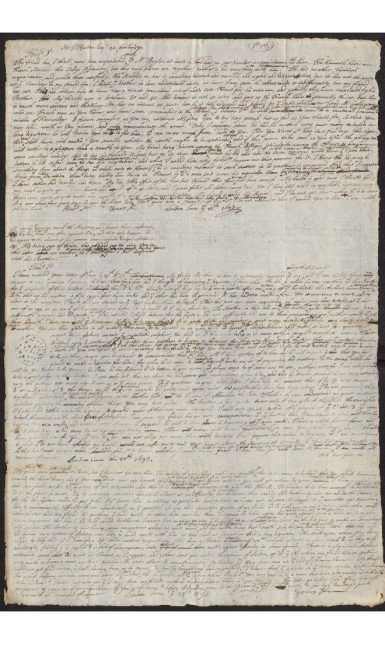

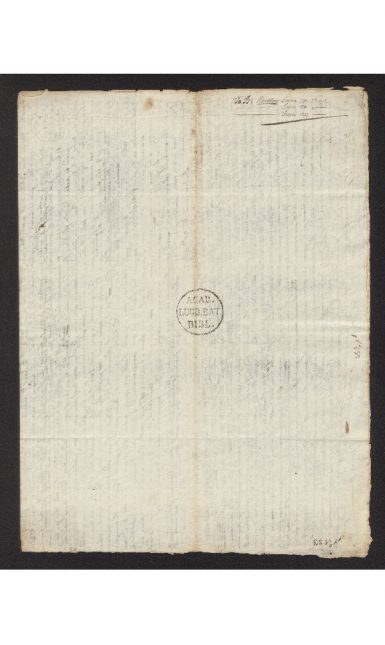

Newtonian alchemical networks
If Newman has already identified one of Fatio’s alchemical collaborators in a certain Captain de Tegny, these letters, which date from a period which Newman could not account for (for lack of primary sources of this kind) tell us that de Tegny’s brother in law, a certain Monsieur de Grancey, also played an important role in the making of Newtonian alchemy. Networks of people were networks of expertise and materials: while Captain de Tegny was good at manipulating antimony, a key material in the preparation of the Philosophers’ Stone, he was very bad at Latin, while Grancey was a skilled Latin reader thus being able to access alchemical texts and recipes written in that language. Translating from one language to another was a key skill in alchemical practices: after all, we should bear in mind that Newton himself could not read French very well, and used Fatio and his French Huguenot collaborators to access French alchemical knowledge.
The unique nature of these draft letters, however, does not only spring from their rather peculiar location in the UBL’s Special Collections, and from the fact that they speak about Newtonian alchemical networks, but also from the presence of Fatio’s original sketch depicting “globules” on the surface of sophic mercury. This image had the goal of making visible one of the crucial experimental phases of the preparation of sophic mercury, and of the process of fermentation in particular.
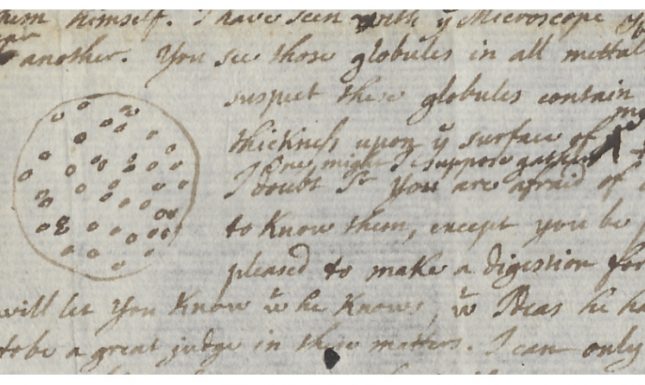

Circulation of knowledge
To conclude, the letters held at the UBL are extremely important to fill a gap in our knowledge and enrich our understanding not only of Newton’s alchemical practices but also of how they relied on the circulation of forms of knowledge, things and expertise between England and France, bringing together people from multiple religious faiths and confessions at a time of political turmoil and changes.
If you are interested in knowing more, both about the letters and about the historiography on Newtonian alchemy which I used, or want to read a transcription of the letters, see my (peer-reviewed and open-access) article recently published on Nuncius. Journal of the Material and Visual History of Science.
Author: Lavinia Maddaluno is currently Max Weber Fellow at the European University Institute (Florence) and was a Brill Fellow at the UBL Scaliger Institute in 2018.


